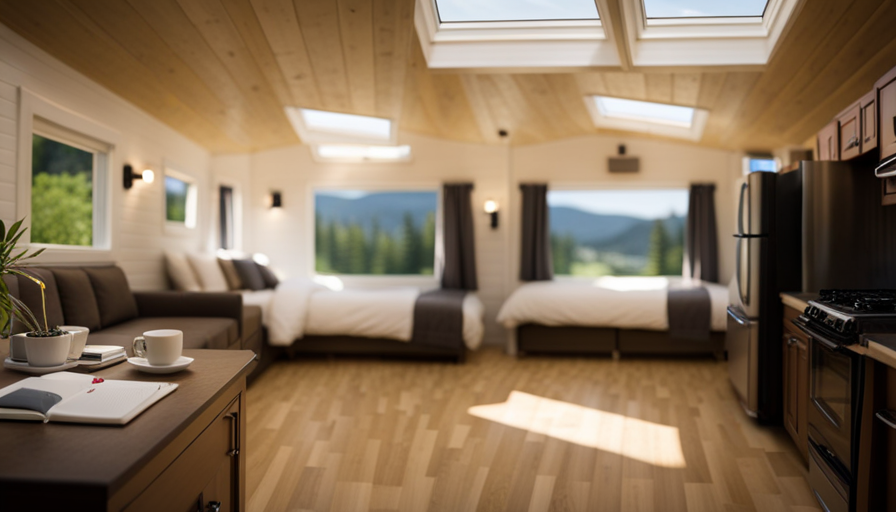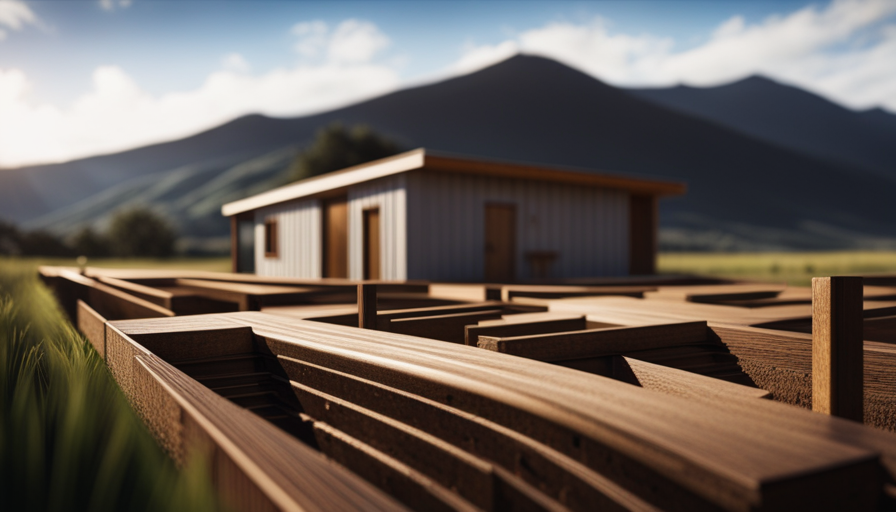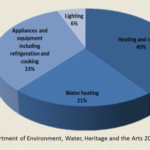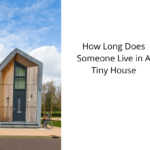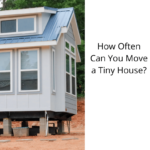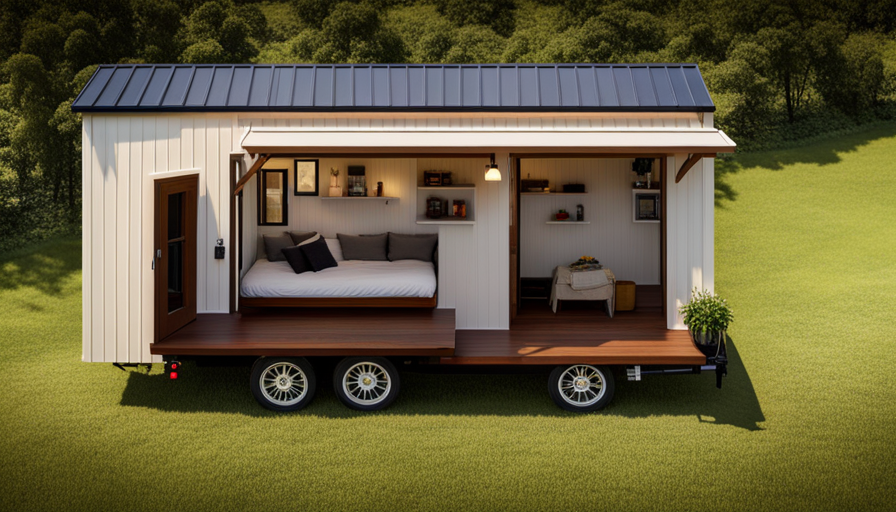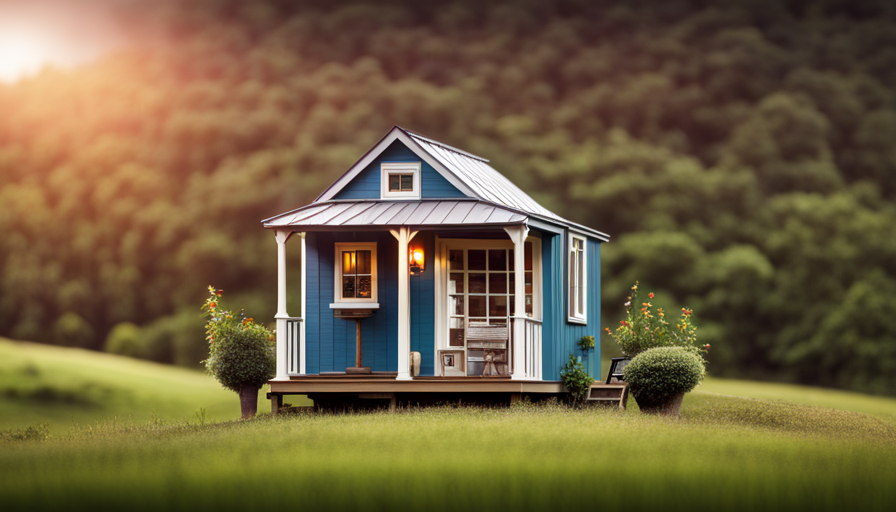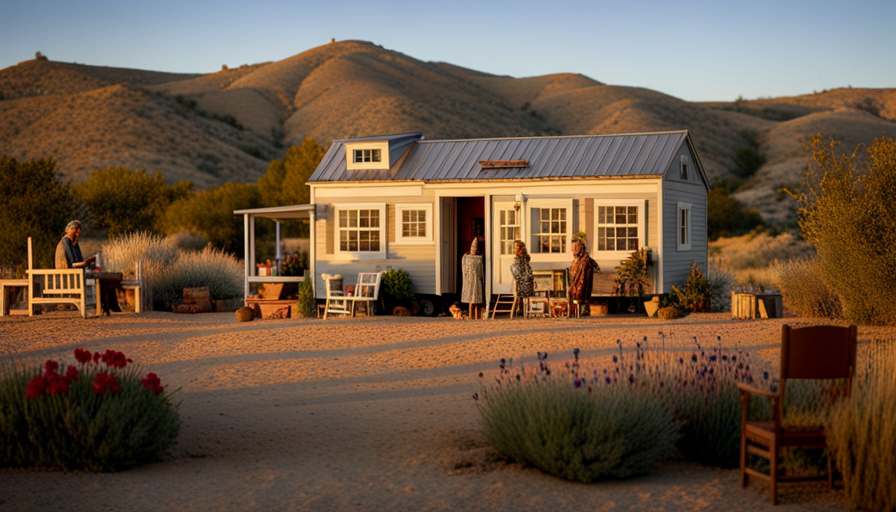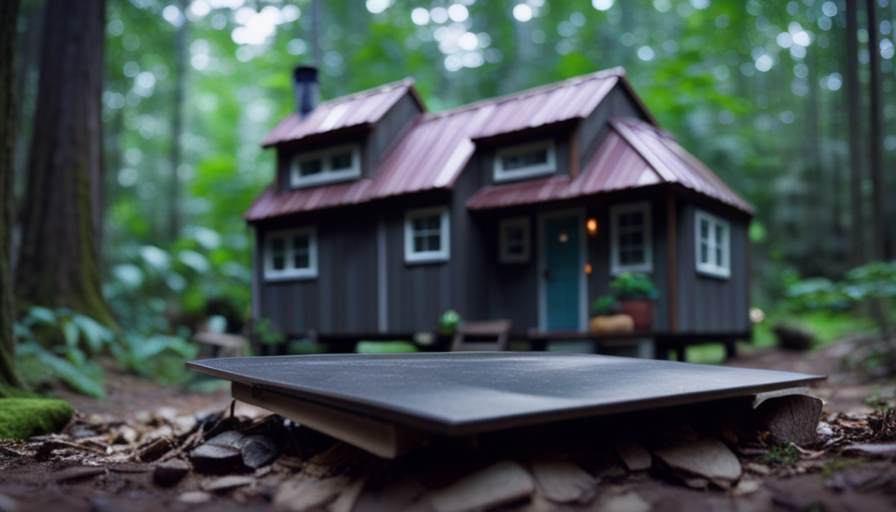Did you know that in the past 50 years, the average size of an American household has nearly tripled? In today’s United States, a new home typically spans an impressive 2,500 square feet on average. But what if I told you that it’s completely feasible to live comfortably in a home that’s just a fraction of this size?
Welcome to the world of tiny houses, where less is truly more. In this article, we will explore the concept of tiny houses and delve into the question of just how big of a tiny house can I move. We will define the size limits of tiny houses and discuss the factors to consider when choosing the size of your tiny abode.
Additionally, we will explore the challenges of moving a larger tiny house and provide tips for a smooth relocation. So, if you’re ready to embrace a minimalist lifestyle and downsize your living space, read on to find the perfect size for your tiny house journey.
Key Takeaways
- Average American homes have tripled in size in the past 50 years, but tiny houses are designed to be compact and space-efficient.
- Tiny houses range in size from 100 to 400 square feet, offering a smaller and more affordable alternative to traditional homes.
- Considerations such as building codes, road travel dimensions, and zoning regulations are important when constructing a tiny house.
- Personal lifestyle and space requirements should be taken into account when choosing the size of a tiny house, along with budget and maintenance considerations.
Understanding the Concept of Tiny Houses
So you’re curious about the concept of tiny houses, huh? Let me break it down for you.
A tiny house is a compact dwelling that typically ranges in size from 100 to 400 square feet. It is designed to maximize space efficiency and minimize the environmental impact. The idea behind tiny houses is to simplify your life and reduce your carbon footprint.
Living in a tiny house comes with numerous benefits. Firstly, it allows you to live a more affordable lifestyle. With lower construction and maintenance costs, as well as reduced energy consumption, tiny house living can save you money in the long run. Additionally, tiny houses promote sustainability by using fewer resources and producing less waste. They can be designed with eco-friendly features like solar panels and composting toilets, further minimizing their impact on the environment.
Now, let’s transition into defining the size limits of tiny houses. When it comes to determining how big of a tiny house you can move, there are certain regulations and considerations to keep in mind.
Defining the Size Limits of Tiny Houses
When it comes to defining the size limits of tiny houses, there are two key factors to consider: legal considerations and building codes, as well as maximum dimensions for road travel.
It’s important to understand the legal requirements and building codes in your area to ensure compliance when constructing a tiny house.
Additionally, knowing the maximum dimensions for road travel is crucial for transportation purposes, as certain size restrictions may apply.
Legal Considerations and Building Codes
You’ll be amazed at how much you can push the boundaries of building codes and still find legal ways to accommodate a surprisingly spacious tiny house. When it comes to building permits, it’s important to research the specific requirements of your jurisdiction.
Some areas may have restrictions on the size or height of the tiny house, while others may require certain safety features like fire sprinklers. Zoning regulations also play a role in determining where you can place your tiny house. Some areas may allow tiny houses on residential properties, while others may require them to be in designated areas or on wheels. It’s crucial to understand and comply with these regulations to ensure your tiny house is legal.
Moving on to the next section about maximum dimensions for road travel, it’s important to consider transportation restrictions when designing your tiny house.
Maximum Dimensions for Road Travel
Traveling with a tiny house on the road requires careful consideration of its dimensions. To ensure a smooth journey, it’s essential to adhere to maximum weight limits and road regulations. Here are three key factors to keep in mind:
-
Maximum Weight: Most roads have weight restrictions to prevent damage to infrastructure. It’s crucial to know the maximum weight your tiny house can be to comply with these regulations. Exceeding weight limits can result in fines or even road damage.
-
Road Regulations: Different states and countries have varying road regulations, including maximum height, width, and length allowances. Familiarize yourself with these regulations to avoid any legal issues or accidents during your travels.
-
Transportation Method: Depending on the size of your tiny house, you may need to consider specialized transportation methods, such as hiring professional movers or utilizing escorts. These options ensure compliance with road regulations and guarantee a safe journey.
Considering these factors will help you determine the appropriate size for your tiny house while complying with road regulations.
Factors to Consider When Choosing the Size of a Tiny House
When considering the size of a tiny house, there are two key factors to take into account: lifestyle and space requirements, as well as budget and cost considerations.
In terms of lifestyle and space requirements, it’s important to carefully assess your needs and determine how much space you require for living, sleeping, cooking, and storage.
Additionally, considering your budget and cost considerations is crucial, as the size of a tiny house will directly impact the overall cost of construction and maintenance.
Lifestyle and Space Requirements
Living in a tiny house requires carefully considering your lifestyle and space needs. Designing a minimalist lifestyle is essential to make the most of the limited space available. This involves decluttering and simplifying your belongings, only keeping what is necessary and meaningful.
Additionally, maximizing outdoor living is crucial in a tiny house. Creating a functional outdoor space allows for activities such as cooking, dining, and relaxation, therefore expanding the overall living area. Incorporating a deck or patio, as well as utilizing outdoor furniture and plants, can significantly enhance the living experience.
By carefully evaluating your lifestyle and space requirements, you can ensure that your tiny house meets your needs while providing a comfortable and efficient living environment.
Transitioning into the subsequent section about budget and cost considerations, it is important to also evaluate the financial aspect of building and maintaining a tiny house.
Budget and Cost Considerations
To make your dream of living in a compact dwelling a reality, it’s crucial to carefully assess the budget and cost considerations involved in building and maintaining a tiny house. When planning for a tiny house, it’s important to consider not only the initial construction costs, but also ongoing expenses such as utilities, insurance, and maintenance. Conducting a comprehensive cost analysis will help you determine the feasibility of your project and avoid any financial surprises down the line. To assist you in your budget planning, here is a breakdown of potential costs for a tiny house:
| Cost Category | Average Range |
|---|---|
| Construction | $20,000 – $100,000 |
| Utilities | $100 – $300 per month |
| Insurance | $500 – $1,500 per year |
| Maintenance | $500 – $1,000 per year |
By carefully considering these budget considerations and conducting a thorough cost analysis, you can ensure that your tiny house project fits within your financial means. In the next section, we will explore designing a functional layout for a larger tiny house, maximizing the available space while maintaining comfort and functionality.
Designing a Functional Layout for a Larger Tiny House
When designing a functional layout for a larger tiny house, it’s important to focus on maximizing storage and utilizing multi-purpose furniture.
By strategically placing built-in storage solutions and selecting furniture that serves multiple functions, every square inch of space can be utilized efficiently.
Additionally, creating open and airy spaces is crucial to prevent the larger tiny house from feeling cramped or claustrophobic. This can be achieved by incorporating elements such as large windows, open floor plans, and light color schemes.
Maximizing Storage and Multi-purpose Furniture
Imagine the endless possibilities of cleverly designed multi-purpose furniture that maximizes storage in your tiny house! When it comes to maximizing organization and space-saving solutions, every inch counts.
One strategy is to utilize furniture with built-in storage compartments, such as ottomans with hidden compartments or beds with drawers underneath. These hidden storage spaces can be used to store items that aren’t frequently used, keeping them out of sight and freeing up valuable floor space.
Additionally, consider investing in furniture that can serve multiple purposes, such as a dining table that can also be used as a desk or a sofa that can transform into a bed.
By incorporating these space-saving furniture options, you can create open and airy spaces that feel larger than they actually are, making your tiny house feel more spacious and comfortable.
Creating Open and Airy Spaces
With cleverly designed multi-purpose furniture and strategic storage solutions, your tiny living space can transform into an open and airy sanctuary, inviting you to breathe in the freedom of spaciousness.
Open floor plans are essential in creating a sense of openness in a tiny house. By eliminating unnecessary walls and barriers, you can maximize the flow of natural light and create a seamless connection between different areas of your home.
Strategically placing windows and skylights can further enhance the brightness and airiness of your space, allowing sunlight to flood in and uplifting your mood. Additionally, choosing light and neutral colors for your walls, floors, and furniture can help create an illusion of a larger space. These design choices not only make your tiny house feel more expansive but also provide a refreshing and rejuvenating environment.
Transitioning into the subsequent section about transportation challenges for larger tiny houses, it is important to consider the practicality of moving a larger structure.
Transportation Challenges for Larger Tiny Houses
You’ll face transportation challenges when moving larger tiny houses. The size and weight of these houses can create transportation logistics that require careful planning and consideration. Here are some key points to keep in mind:
-
Weight Restrictions: One of the main challenges when transporting larger tiny houses is complying with weight restrictions imposed by road regulations. These restrictions vary depending on the type of road and vehicle used for transportation. It’s crucial to ensure that the total weight of the house, including all its contents, falls within the legal limits to avoid fines or complications during the journey.
-
Transportation Logistics: Moving a larger tiny house requires meticulous planning in terms of route selection and coordination with transportation companies. Factors such as low bridges, narrow roads, and tight turns must be taken into account to avoid any potential damage to the house or obstacles during transit.
Considering these transportation challenges for larger tiny houses, alternative options for bigger living spaces can provide viable solutions.
Alternative Options for Bigger Living Spaces
Transportation Challenges for Larger Tiny Houses can be quite daunting, especially when it comes to moving them. However, there are alternative options for those seeking bigger living spaces. With the right planning and creative space solutions, it’s possible to create a more spacious and comfortable tiny house that can still be easily transported.
One option is to incorporate multi-purpose furniture and storage solutions. By utilizing furniture that can serve multiple functions, such as a sofa that can also be used as a bed or storage compartments built into stairs, you can maximize the use of space without sacrificing comfort or functionality. Additionally, utilizing vertical space by incorporating loft areas or tall shelving units can further optimize the living area.
Another option is to consider expandable or modular tiny houses. These innovative designs allow for additional living space to be added when needed, while still maintaining the ability to be transported. Some designs include slide-out sections or collapsible walls that can be expanded or contracted as desired.
There are various creative space solutions available for those in search of bigger living options in their tiny houses. By incorporating multi-purpose furniture, utilizing vertical space, or exploring expandable designs, it’s possible to create a more spacious living environment without compromising on mobility.
Now, let’s explore the pros and cons of moving a larger tiny house.
Pros and Cons of Moving a Larger Tiny House
Imagine the exhilarating freedom of taking your spacious dream home on an adventure, but also the overwhelming responsibility of navigating the challenges that come with it.
When considering moving a larger tiny house, there are both pros and cons to consider. One advantage of a bigger tiny house is the increased living space it provides. With more square footage, you have the freedom to incorporate additional amenities and storage options. Additionally, a larger tiny house may offer more flexibility in terms of layout and design.
However, there are also drawbacks to moving a larger tiny house. One major concern is the size limits imposed by transportation regulations. Depending on the dimensions of your tiny house, you may encounter difficulties with permits, transportation restrictions, and narrow roads. Moreover, larger tiny houses require more powerful towing vehicles, which can be more expensive and challenging to maneuver.
Despite these challenges, moving a larger tiny house can be a rewarding experience for those seeking a spacious and comfortable living space.
In the subsequent section about ‘tips for moving a larger tiny house,’ we will explore strategies to overcome these obstacles and ensure a successful move.
Tips for Moving a Larger Tiny House
When it comes to moving a larger tiny house, there are two key points to consider: properly securing and preparing for travel, and hiring experienced and reliable movers.
First and foremost, it’s essential to ensure that your tiny house is securely fastened to the trailer, with all loose items inside properly secured. Additionally, you should take the time to inspect the tires, brakes, and lights on the trailer to ensure they’re in good working condition.
Secondly, hiring experienced and reliable movers is crucial to ensure a smooth and efficient move. Look for movers who’ve previous experience in transporting tiny houses and can provide references to verify their expertise.
Properly Securing and Preparing for Travel
To ensure a safe journey for your tiny house, you’ll need to make sure it’s properly secured and prepared for travel, even if you’re concerned about the size. Here are some key tips for preparing the logistics and safety measures:
-
Start by inspecting the exterior of your tiny house, checking for any loose or damaged parts that could become a hazard during transport.
-
Secure all doors, windows, and hatches with sturdy locks or latches to prevent them from opening while on the road.
-
Remove any loose items or furniture inside the tiny house to prevent them from shifting and causing damage during transit.
-
Utilize strong and reliable tie-down straps or chains to secure your tiny house to the trailer, ensuring it stays in place during travel.
-
Consider installing additional safety features such as wheel chocks and sway control devices to enhance stability and minimize the risk of accidents.
By following these proper securing and preparation measures, you can confidently move your tiny house without worrying about any potential issues. Hiring experienced and reliable movers will further ensure a smooth transition to your new location.
Hiring Experienced and Reliable Movers
Experienced and reliable movers can seamlessly handle the transition of your compact dwelling, ensuring a stress-free journey. When it comes to moving a tiny house, hiring professionals can save you time, effort, and potential damage to your home. While some DIY enthusiasts may prefer the challenge of moving their tiny house on their own, it is important to recognize the expertise that professional movers bring to the table. They have the necessary equipment, knowledge, and experience to safely transport your tiny house from one location to another.
To give you an idea of what to expect when hiring professional movers, here is a comparison table showcasing the key differences between DIY moving and hiring experts:
| Aspect | DIY Moving | Hiring Professionals |
|---|---|---|
| Expertise | Limited | Extensive |
| Equipment | Limited | Specialized |
| Safety | Risk of damage or injury | Ensured |
| Efficiency | Time-consuming | Time-saving |
With the help of experienced movers, you can rest assured that your tiny house will be transported safely and efficiently. Now, let’s dive into the exciting world of community living and tiny house villages.
Community Living and Tiny House Villages
Living in a tiny house village offers the opportunity to embrace a cozy and close-knit community lifestyle. Community engagement is a key aspect of tiny house living, as it allows individuals to connect with like-minded individuals who share a passion for sustainable living.
These villages often have shared spaces and amenities, allowing residents to come together and foster a sense of belonging. Living in such a community promotes sustainable living practices, as residents can collaborate on various initiatives such as composting, rainwater harvesting, and renewable energy generation.
In addition to the environmental benefits, tiny house villages also provide social advantages. The close proximity of the houses encourages frequent interaction, fostering a strong sense of community. Residents can engage in communal activities like potlucks, gardening, or group discussions. These spaces also offer opportunities for skill-sharing and learning from others.
Finding the right size for your tiny house journey involves more than just the dimensions of the physical structure. It is about finding a community that aligns with your values and goals. Living in a tiny house village not only allows you to downsize your living space but also opens doors to a vibrant and supportive community.
Conclusion: Finding the Right Size for Your Tiny House Journey
Discovering the perfect fit for your tiny house adventure means uncovering a community that perfectly aligns with your values and aspirations. When it comes to finding the perfect size for your tiny house, there are several considerations for tiny living that you should keep in mind.
First and foremost, you need to assess your personal needs and lifestyle. Think about how many people will be living in the tiny house and what activities you’ll be doing inside. This will help you determine the amount of space you require.
Additionally, take into account your future plans. Are you planning to start a family or downsize even further? These factors will influence the size of your tiny house.
Next, consider the zoning regulations and building codes in the area where you plan to move your tiny house. Some communities have specific size restrictions for tiny houses, so make sure to do your research beforehand.
Lastly, think about the practicality and functionality of your tiny house. Will it have enough storage space for your belongings? Can you comfortably move around and perform daily tasks without feeling cramped?
By carefully considering these factors, you can find the perfect size for your tiny house and create a living space that suits your needs and desires. Remember, the journey to finding the right size for your tiny house is just as important as the destination.
Frequently Asked Questions
Are there any legal restrictions on the size of a tiny house?
Legal restrictions on the size of a tiny house vary depending on location and building codes. In some areas, there may be a minimum square footage requirement to ensure safety and livability. However, it’s important to note that these restrictions can differ greatly from one jurisdiction to another. It’s advisable to consult local zoning and building regulations to understand the specific limitations and requirements in your area before planning the size of your tiny house.
How much does it cost to move a larger tiny house?
Moving a larger tiny house can be quite costly. The cost of relocating a bigger tiny house depends on several factors. These factors include the distance of the move, the complexity of the route, any necessary permits or escorts, and the size and weight of the house. Additionally, additional costs may include disconnecting utilities, securing the house for transportation, and any necessary repairs or modifications.
Therefore, it’s important to carefully consider these factors when determining the cost of moving a larger tiny house.
What are the zoning regulations for parking a larger tiny house?
Navigating the complex world of zoning regulations and parking restrictions for larger tiny houses can be akin to traversing a labyrinth.
These regulations vary greatly depending on location, with some areas imposing strict size limitations and others being more lenient.
It’s crucial to research and understand the specific requirements set forth by local authorities.
These regulations typically cover factors such as setback requirements, maximum allowable square footage, and the need for permits or variances.
Can a larger tiny house be connected to utilities like water and electricity?
Connecting utilities to a larger tiny house is possible, as long as the house is designed to accommodate them. Water and electricity connections can be installed, allowing the house to have access to these essential services.
However, it’s important to note that larger tiny houses may require more power and water than smaller ones. Additionally, if you’re looking to make your larger tiny house off-grid, alternative solutions such as solar panels and rainwater collection systems can be utilized to provide self-sufficiency.
Is it possible to add an extension or additional structure to a larger tiny house in the future?
Adding an extension or additional structure to a larger tiny house in the future is indeed possible. With careful planning and adherence to local building codes, you can modify your tiny house to suit your evolving needs.
Whether it’s creating extra living space, adding a porch, or even expanding vertically, the flexibility of a larger tiny house allows for future modifications. However, it’s crucial to consult professionals and ensure structural integrity and proper utility connections are maintained throughout the process.
Conclusion
After carefully considering the concept of tiny houses and exploring the factors to consider when choosing their size, it’s clear that there is no one-size-fits-all answer to the question of how big a tiny house can be to move.
However, with proper planning and design, a larger tiny house can be successfully transported. While there are challenges involved, such as transportation logistics, the benefits of a larger living space can outweigh the difficulties.
By following some tips and considering community living options, you can find the perfect size for your tiny house journey.
Hi, I’m Emma. I’m the Editor in Chief of Tiny House 43, a blog all about tiny houses. While tree houses are often associated with childhood, they can be the perfect adult retreat. They offer a cozy space to relax and unwind, surrounded by nature. And since they’re typically built on stilts or raised platforms, they offer stunning views that traditional homes simply can’t match. If you’re looking for a unique and romantic getaway, a tree house tiny house might just be the perfect option.
